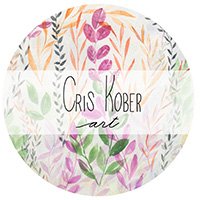Where is my money going?
This was a question that hit my mind every month when it was time to pay my bills. It’s like my money had a mind of its own and someone else was using my credit card. I purchased only a few cheap things, but somehow my statements were in the thousands more than I expected.
Because of that, I felt poor. I felt like I never had any cash to do anything significant. I couldn’t buy the furniture I really wanted because it was way too expensive and I just didn’t have the money. But even though, I didn’t buy the nice furniture, I still had a huge bill at the end of the month! It’s crazy, right? I don’t spend any money, but somehow I have a huge bill.
“Budget, Net Worth, Expenses” = scary
I had been listening to some money management podcasts and was totally put off by the words “budget” and “Net Worth”. “Ugh!! That’s too hard for me, I don’t want to do it!,” I thought every time.
There was a guy who talked about not buying a latte every day and watching your money grow as a result. A latte? Really?? I don’t drink lattes. I would shut down the moment someone said those scary words. The latte guy used them too!
I went on feeling poor for a few years. Without understanding why - we had an income after all. Until one day I heard someone saying that a friend of hers sat down one afternoon and saved her family hundreds of dollars by switching some services over to lower cost ones. That got me thinking. What was I doing proactively, aside from “not spending”, to save us money every month?
From then on, I kept revisiting that conversation. I started to slowly take a look at our bills and see if we could switch over to cheaper services. Our garbage collection was the first to get switched. I didn’t like them, and they kept raising their prices without notice. And boom! I got the ball rolling.
I started simple, switching from expensive services to cheaper ones, canceling memberships that I paid for but never used, paying attention at prices at the grocery store. Little steps that somehow were adding up.
But I still couldn’t tell for sure if my changes were having an impact. And with that, I started tracking. First, I would just look at the credit card statements once a month. Was my bill smaller than last moth? That was my basic question. At this point, things felt better, but I still had that feeling that I had no control over where the money went. I needed data to see what was happening.
I stored my numbers in my head. That’s as good as useless.
Slide from my Skillshare classUntil now, all the information I needed was stored in my head, or so I thought. I decided to list all our monthly bills and determine how much money we absolutely had to spend. That included the mortgage, utilities, internet, tuition, insurance etc. All the bills that were recurring and we couldn’t just cancel or change.
That gave me a good idea of what our FIXED EXPENSES were. I knew how much we were going to spend every month on these bills.
Next, I listed all the expenses that vary every month. That included groceries, entertainment, medical and dental.
Since these vary a lot, I called them FLEXIBLE EXPENSES. To calculate how much I spent on those every month, I took the average of the 3 months prior. That gave me a pretty good ballpark of what those expenses would look like every month.
The important shift here is that now these numbers were written down and out of my head.
Once I had that, I began finding ways to look at my numbers that would inform actions I could take to reduce our expenses. I broke them down by month, by quarter and I also compared what I spent with what I had expected to spend. It was liberating!
Taking a closer look can change the whole thing
At the end of this analysis, I had a process that I could do weekly. I created a whole excel workbook that helps me stay on track of my finances for the entire year. And the best part? It helps me during tax time, because some of the expenses I have are deductible!
After having implemented this practice for a while, I know what I can expect to spend every month and I also know where I have flexibility for spending more or less. Saving money became automatic. And I can see where I am in a month compared to where I want to be at any time.
It took several years feeling broke before I finally realized that all I had to do was to look at where my money was going. That knowledge surely changed my attitude toward spending and saving, and also made me feel abundant with what we already had.
Click the image below to access my skillshare class.
If you want to learn how to implement this process, you can take my class here: take charge of your money - I have been a member of Skillshare for a long time. It’s a great platform for anyone who loves to learn new things. You get a 1-month free trial with the link above! You can take my class in less than 1 hour and spend the rest of the time checking out the other amazing classes there.
Or you may purchase the workbook on its own here



